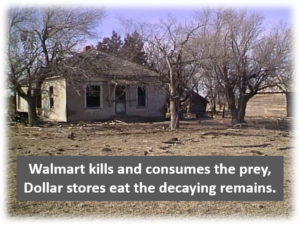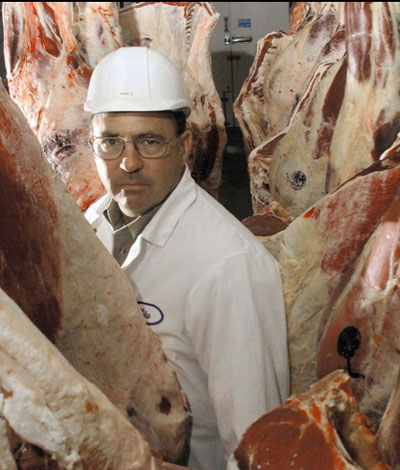
St. Paul’s instruction about the Husbandman as the first partaker of the fruits is cut in stone above the main entrance to the USDA building in Washington DC. Unfortunately, the people inside have ignored it.
Congress has betrayed the original USDA mission, leaving farmers bankrupt, land degraded, and people hungry.
On May 15, 1862, Abraham Lincoln signed into law an act of Congress establishing “at the seat of Government of the United States a Department of Agriculture.” Two and one-half years later, in what was to be his last annual message to the Congress, Lincoln said: “The Agricultural Department, under the supervision of its present energetic and faithful head, is rapidly commending itself to the great and vital interest it was created to advance. It is precisely the people’s Department, in which they feel more directly concerned than in any other. I commend it to the continued attention and fostering care of Congress.” –Lincoln’s Agricultural Legacy by Wayne D. Rasmussen
The following memo is from my notes nine months after attending the new administration’s Rural Summitt in June 2010. It was obvious by then the “people’s Department” under Vilsack remained the corporation’s Department and continues to be to this day.
From: Mike Callicrate
Sent: Friday, March 11, 2011 6:26 AM
Subject: Rural Summit – More of the same…the scriptwriter hasn’t changed.
I heard USDA Secretary Vilsack speak at the Rural Summit in Hillsboro, Missouri on June 3, 2010. The words were the same as Ann Veneman, Dan Glickman, Earl Butz, and any of the other Secretaries of Agriculture during the last 50 years.
A few of Vilsack’s main points follow:
-
-
- We must build demand – expand exports
- We are food self-sufficient. (Not true – We import 20% of our beef and 60 to 70% of our fruits and vegetables. Our food is controlled by multinational corporations – not us!).
- We must remove the barriers to biotechnology (a nice plug for Monsanto).
- We must pass the free trade agreements that are pending.
- The “know your farmer thing” that’s so upsetting to big agribusiness companies, is really just an effort to educate people that food doesn’t come from the grocery store. (Kathleen Merrigan no doubt felt slapped in the face.)
- Markets should be competitive. (And that is all he said.)
- We must let our farmers be our energy suppliers – Expand biofuel production.
- We must make the most of outdoor recreation, providing rural areas with additional income. (Farmers, convert your homes into bed and breakfasts and get your toilet brushes ready.)
- Enviro credits should be paid to our farm and ranch families to supplement their income and improve the environment. Vilsack said there needs to be “Ecosystem markets” (a.k.a. derivatives) to pay farmers for carbon sequestering, filter strips, and other environmental improvement activities.
- Agriculture must speak with one voice (Yes, of course – right after the Republicans and Democrats in Congress)
-
The mobile slaughter trailer was on display just outside the main building to show what is now possible as a part of rebuilding local and regional food systems. Bill Weida, who is heading up the project, was reprimanded by a couple of USDA officials for bringing the slaughter unit. They said the Summit wasn’t supposed to be a trade show. Bill responded he and other members of the team had tried to contact USDA about displaying the trailer. There had been no response to the numerous phone calls and emails. Bill explained the construction of the unit was not for profit and in no way an attempt to make money or take unfair advantage of the Summit, only an attempt to show what was actually being accomplished. Bill reminded the officials of what USDA had said about the rebuilding of rural America – were they really serious?
As far as the trade show comment – big agribusiness was well represented from the main podium to the large audience.
Kathleen Merrigan and other USDA staff toured the slaughter unit and seemed to be impressed. However, Merrigan warned the photograph of her with the unit could not be published without her permission – which she did not give.
Mike Callicrate
Today, USDA is completely off mission. We’re at the mercy of a hand full of multinational corporations to eat. This food system catastrophe, although not as visible, is far bigger and more destructive than any natural disaster. The work to rebuild a new food infrastructure will take all of us working together.












